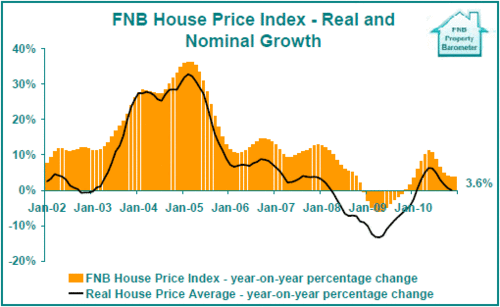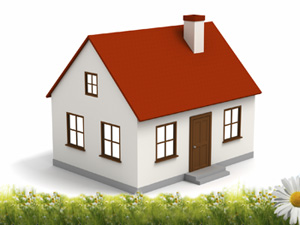A recent Standard Bank residential property gauge notes that the residential property market is unlikely to prosper in the short term, citing the shaky economy, high debt levels of households, fragile labour market and general uncertainty as the main factors. The January 2011 FNB Property market analytics report is along the same lines. It warns that the year ahead will be tough for the residential property market, notwithstanding a slight improvement noted in 2010. Estate agents paint a rosier picture. They point out that the interest rates are at a historic low (Even though the SA Reserve Bank decided not to implement another repro rate cut in January 2011). Other favourable factors which should invigorate demand are slower than expected consumer price inflation and decreasing (though still high) levels of household debt. Estate agents mostly agree that the banks’ strict lending requirements are at present the biggest obstacle for the prospective South African home buyer. According to their figures, more than half of first time home applications are turned down by banks. (In defence of the banks, it must be said that they were told in no uncertain terms to reign in the rising South African household debt burden.) Whether looking through grey-tinted or rosy-tinted lenses, everyone agrees that the South African residential property market is unlikely to experience another boom period like the one from 2003 to 2006 anytime soon. A modest, but steady growth over the next six months seems to be the most optimistic prediction on the cards. So, with the prime interest rate at 9%, the lowest since 1974, why are people not buying their first home or upgrading to a larger house in bigger numbers? Still, the majority of estate agents are of the opinion that the market has definitely bottomed out and are looking forward to a recovery, which usually follows a slump. They are already seeing a shortage of properties and say that the South African residential property market at the beginning of 2011 appears to be firmly in the recovery phase of the cycle. According to them, 2011 is the year of the stabilisation period, after which they expect the annual property price growth of below 10% to continue for a few years. For people with extra money, that means that now is the time to invest, at the beginning of the predicted property upswing. The best buys are, as usual, the properties in popular coastal locations. Of course, property is a long-term investment, and good returns are often only achievable if the property is held for at least a full down-and-up property cycle, which in South Africa generally stretches over seven to ten years. | |
The residential property pulse | |
 | |
According to Absa Bank figures from December 2010, the average prices for houses by size were as follows:
According to FNB data from November 2010:
MortgageSA, reports:
| |
 Is the South African residential property market set to recover in 2011, or will it remain in doldrums? The answer to this question depends on where you look for it.
Is the South African residential property market set to recover in 2011, or will it remain in doldrums? The answer to this question depends on where you look for it.